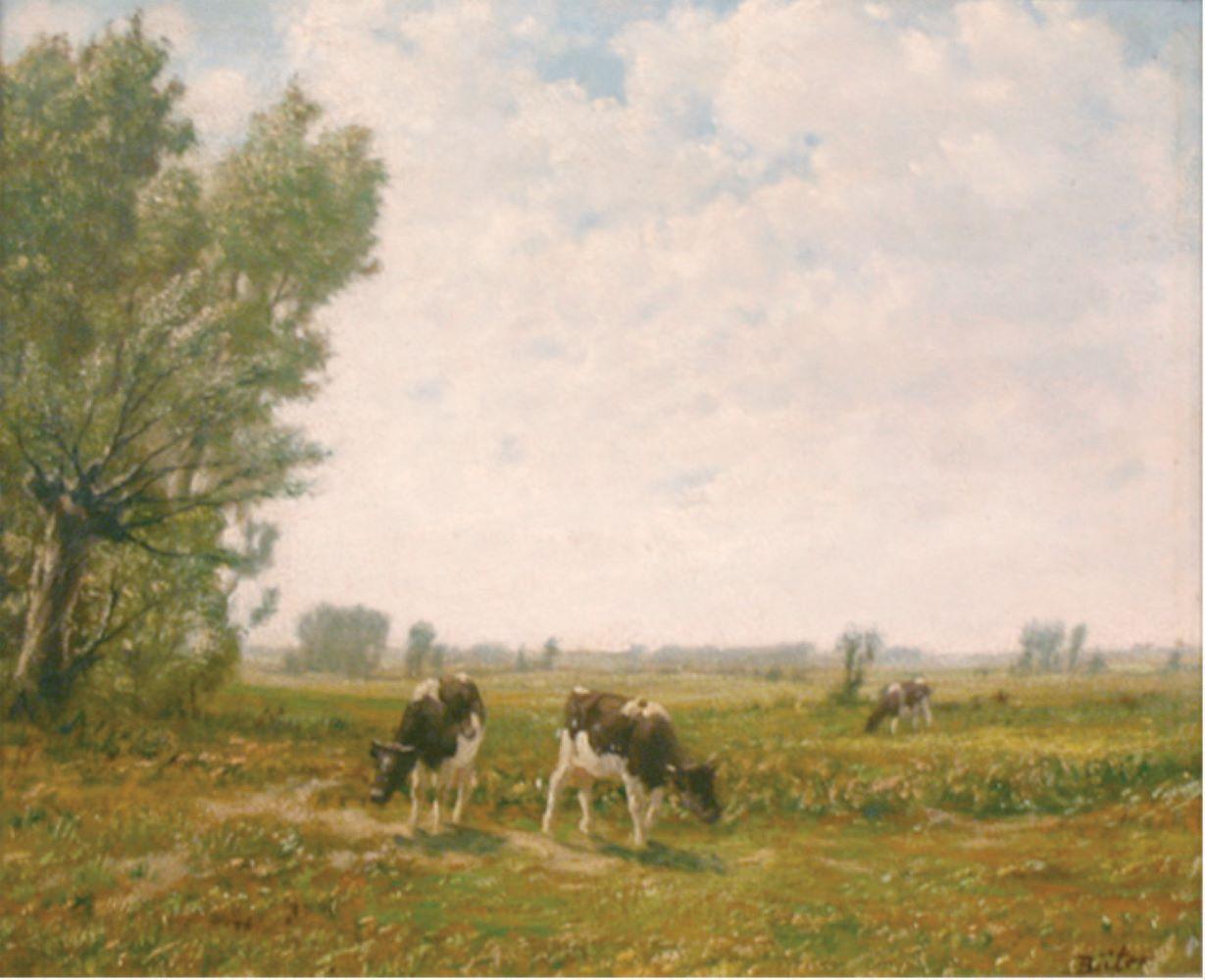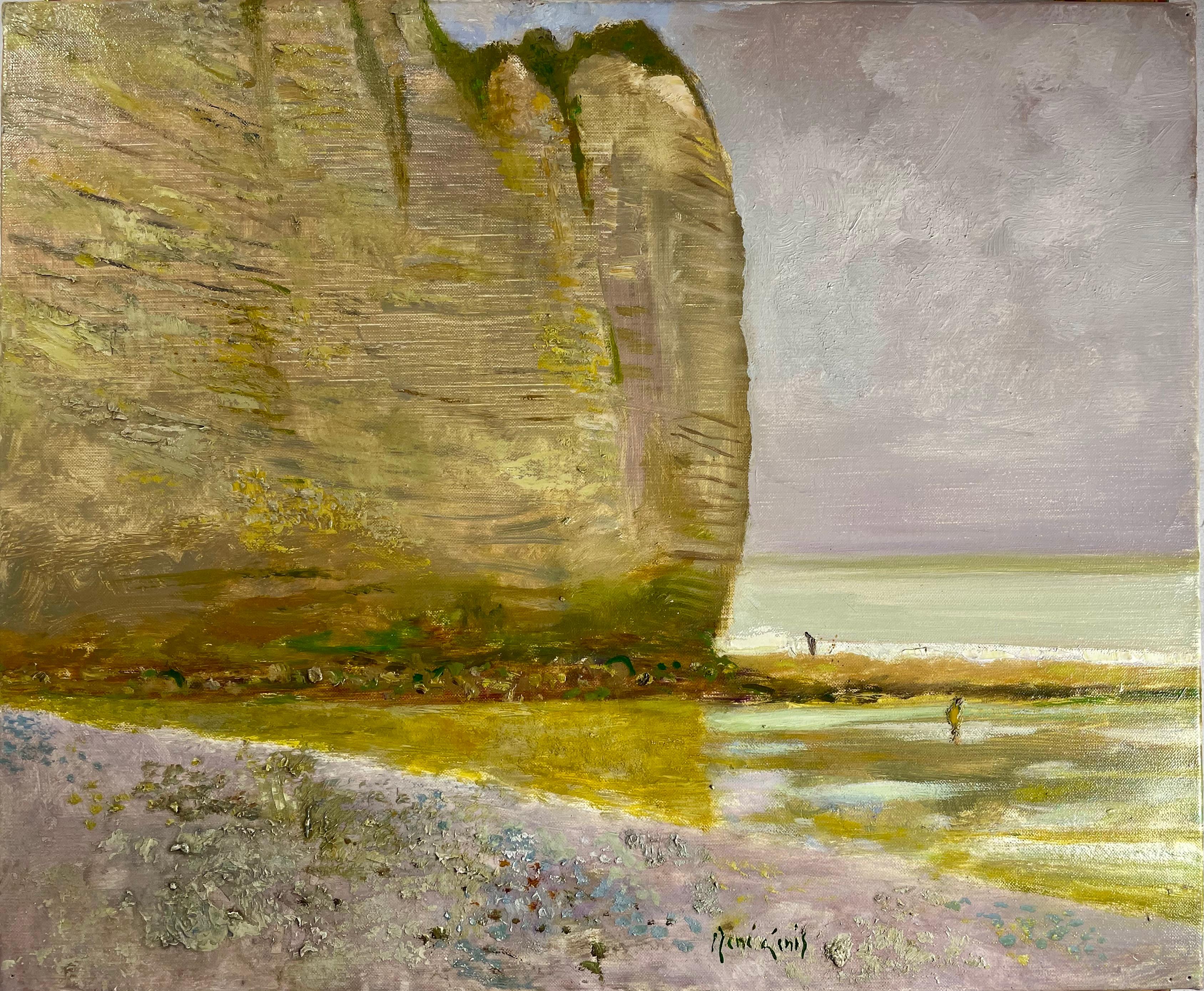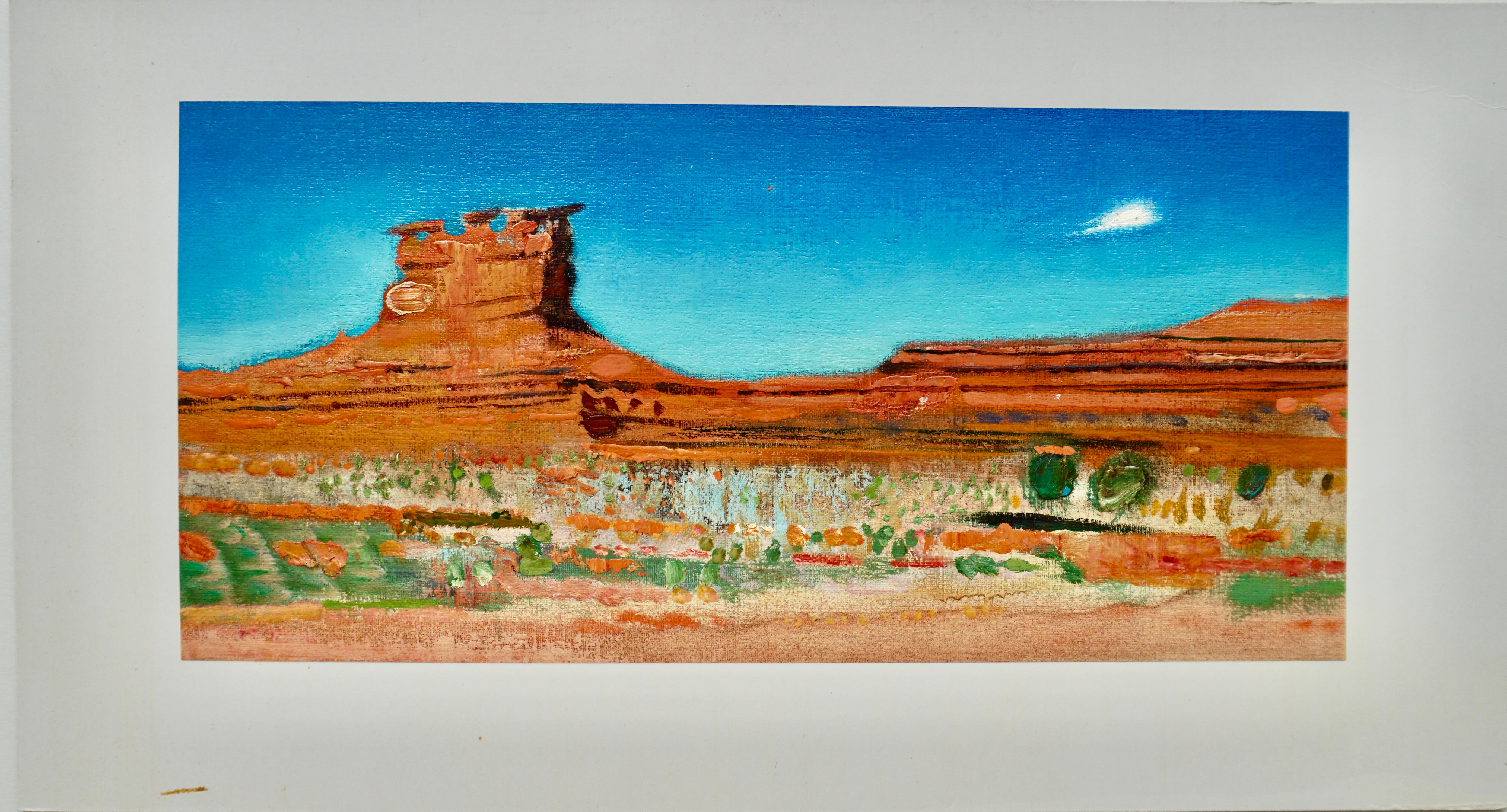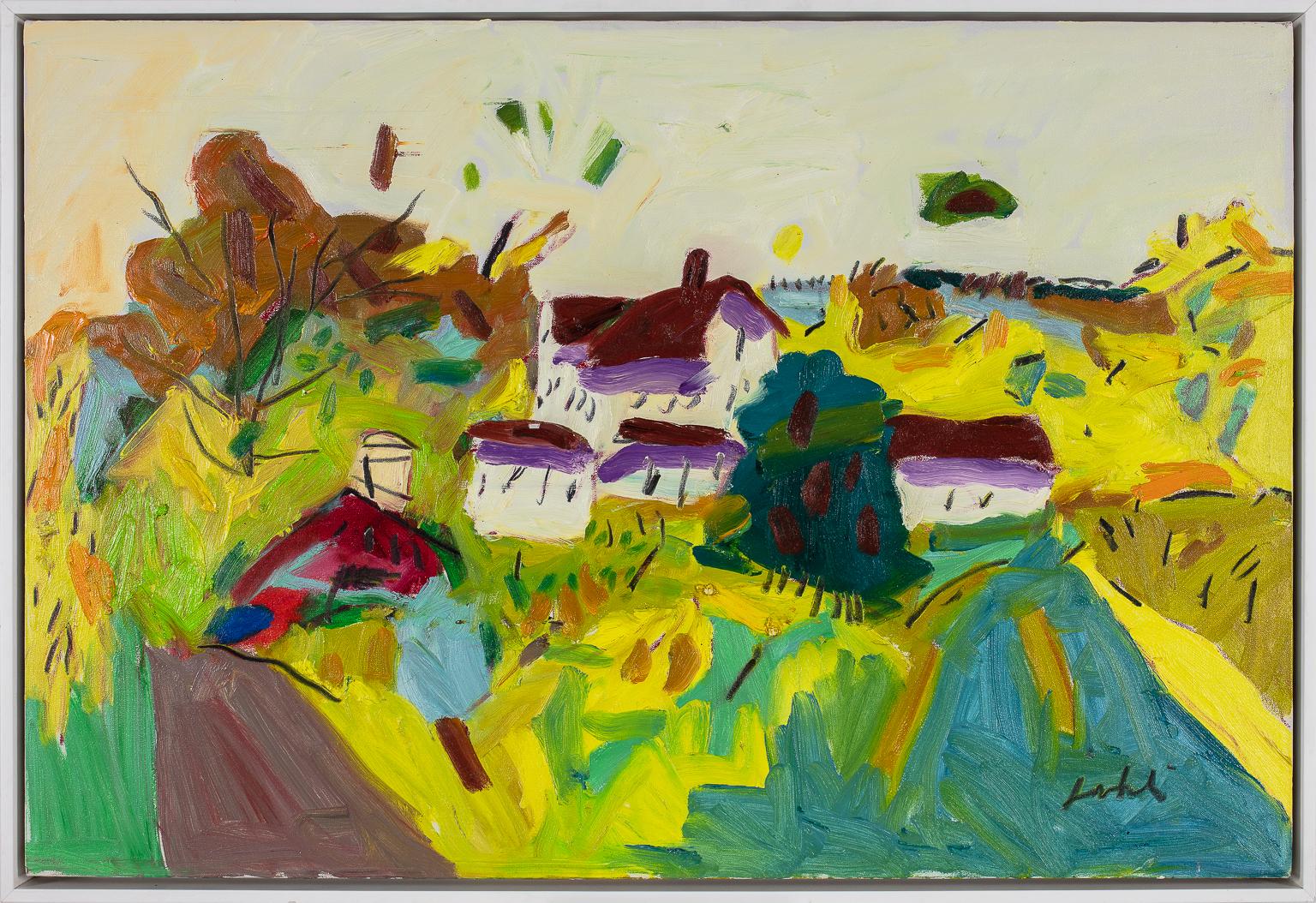Items Similar to Brig EPHRATAH of Port Madoc Entering Naples
Want more images or videos?
Request additional images or videos from the seller
1 of 10
Tommaso de SimoneBrig EPHRATAH of Port Madoc Entering NaplesDated 1875
Dated 1875
About the Item
With a great view of the city of Naples off her bow and Mount Vesuvius off her stern there's no doubt where this Baltimore Clipper Brig is located. This very well executed portrait has great detail of the port and ship with great coloration throughout and great reflections of the ship on the water. The ship is shown in full sail with flags flying.
The ship was owned and Captained by Griffith Jones, a Welshman born 1831. Port Madoc refers to the Welsh City of Porthmadog- it was spelled Portmadoc before 1974.
Her sloped bow and stern along with her size are typical of a Baltimore Clipper but her masts are not as raked as often seen in ships of this design and she is square rigged, though there are historical paintings and drawings of other Baltimore Clippers built in this way.
Most of what we know about the Brig EPHRATAH is due to the famous wreck of her sister ship FROLIC, though FROLIC was built much earlier. FROLIC is considered the most important wreck on the West Coast of the United States. Dr. Tom Layton of Stanford University connected the two ships in his research on FROLIC.
EPHRATAH was slightly larger than FROLIC at 230 tons, 152’ with a breadth of 22’. She was built in 1873 for Griffith Jones & Co. who would also sail as her master. Jones was Welsh by birth, born in 1831 in Llannor.
FROLIC was built in Baltimore's Gardner Brothers shipyard for the Opium Trade. When steamers came along in the late 1850's it was perfect timing for FROLIC to switch to the busy California trade, fueled by the new California Gold Rush. FROLIC was carrying a rich cargo when she was shipwrecked off Point Cabrillo, California in 1850. When it was discovered in the 1980's the wreck and resultant research helped historians understand how those who had attempted to salvage the wreck ended up discovering the redwood forest, leading to the birth of the mill industry in Northern California and the establishment of cities all along the coast particularly around Mendocino.
The Point Cabrillo Light Station and California Historic Park uses this painting of EPHRATAH on their website as no image of FROLIC exists.
Inscribed: Brig EPHRATAH, Pt. Madoc, Entering Bay of Naples, 22-June 1875, Griffith Jones Master
Sight Size: 19 x 29 1/2 Inches
- Creator:Tommaso de Simone (1805 - 1888)
- Creation Year:Dated 1875
- Dimensions:Height: 23.88 in (60.66 cm)Width: 34.38 in (87.33 cm)
- Medium:
- Period:
- Condition:
- Gallery Location:Costa Mesa, CA
- Reference Number:1stDibs: LU2139211542172
About the Seller
No Reviews Yet
Vetted Seller
These experienced sellers undergo a comprehensive evaluation by our team of in-house experts.
Established in 1972
1stDibs seller since 2022
5 sales on 1stDibs
Typical response time: 1 to 2 days
- ShippingRetrieving quote...Ships From: Costa Mesa, CA
- Return PolicyA return for this item may be initiated within 7 days of delivery.
More From This SellerView All
- View of the Hongs, CantonBy 19th Century Chinese schoolLocated in Costa Mesa, CASought by collectors worldwide, art and artifacts showing an early western presence in the Orient boomed with the opening of the China Trade by way of the sailing ship. The surviving paintings which capture the important Chinese harbors...Category
1850s Landscape Paintings
MaterialsCanvas, Oil
- The Five-Masted Schooner ELINOR H.Located in Costa Mesa, CAThis attractive portrait features the five-masted schooner ELINOR H. at full sail in an active sea. The ship has crisp lines and a sharp sense of detail, likely because it was painte...Category
1920s Other Art Style Paintings
MaterialsCanvas, Oil, Board
- On the Coast of Holland, Fishing Boat Ready for SeaBy William Edward NortonLocated in Costa Mesa, CAAn interesting homage to the issue of rank amongst the crews and officers of all vessels, a captain is carried to his ready command by one of his subordinates through the ocean surf ...Category
1890s Other Art Style Landscape Paintings
MaterialsCanvas, Oil
- Amercan Merchant Ship in Philadelphia HarborBy Thomas BirchLocated in Costa Mesa, CAThomas Birch is considered one of the earliest American Marine painters of importance both in his own time and historically, forming the foundation of what would become a great American Maritime movement in the successive years of the 19th century. Born in England, Birch started as a landscape painter but after the War of 1812 he turned to marine subjects, taking inspiration from the best of both English and Dutch maritime traditions but refining these techniques into a very recognizable style all his own. The work featured here is a classic of Birch's later period, when he focused specifically on maritime subjects, mainly the busy waterways of Philadelphia Harbor. Here we see one of those scenes- a series of ships plying their trade, all framed by the city as it sits across the Delaware River, with the tall, white spire of what is either Independence Hall or Christ Church to the left of the main vessel. The details of the city are particularly good in this painting, with the wharf building to the left and the long line of buildings all along the shore. The American Merchant Bark at the center of this painting is rendered in excellent detail, from her house flag and pennant, to her rigging and sails, and down to her deck filled with the activity of crewmembers readying the ship to head out, her gilt billet...Category
1840s Other Art Style Paintings
MaterialsCanvas, Oil, Board
- A Day's Sail in New EnglandBy Mauritz Frederick Hendrick de HaasLocated in Costa Mesa, CAAn able sailor guides a fine sloop through the choppy waters of a busy American port in this work by Dutch-American artist Maurtiz DeHaas. Given the sailor's hat, what appears to be ...Category
1860s Realist Paintings
MaterialsOil, Canvas
- The Clipper FLYING FISH in San Francisco BayLocated in Costa Mesa, CAOne of the most exciting races between American clipper ships took place between October, 1852 and January, 1853. The vessels involved were the crack clippers FLYING FISH, JOHN GILPIN and WILD PIGEON. Departing New York, each a few days apart, the three ships met up off Cape Horn and proceeded, often in sight of one another, to fly up the west coast to San Francisco. The JOHN GILPIN gambled by heading farther west into the pacific where a strong northerly got her to San Francisco first. FLYING FISH and WILD PIGEON remained in sight of one another for most of the voyage in their dash up the coast. FLYING FISH arrived a day after GILPIN, but having left New York three days behind her adversary, was declared the winner. This view shows an excellent starboard view of the great FLYING FISH on her entry into San Francisco Bay. The water has superb light and reflection while the Marin headlands show as her backdrop, with the ever-present misty atmosphere of this important California port. A well captured moment of one of the fastest and most powerful 19th century great sailing ships created. Sight Size: 18 x 34 inches Vallejo Gallery...Category
1990s Paintings
MaterialsCanvas, Oil
You May Also Like
- Bernhard ButerLocated in Saint Augustine, FLArtist: Bernhard Buter (1883-1959) German Title: Rhinish Landscape Medium: Oil on Canvas Dimensions: Framed 19” x 21” , Unframed 11 x 13” Bernhard Buter paints agrarian landscapes i...Category
Early 20th Century Realist Landscape Paintings
MaterialsCanvas, Oil
- "Les Falaise Normande" (The Cliffs Of Normand)By René GenisLocated in Berlin, MDRene Genis (French 1922-2004) “Les Falaise Normande” / The Cliffs of Normand. A sea scape with high cliffs, the beach, and two fishermen. The cliffs are in browns, tans and olives a...Category
1990s French School Landscape Paintings
MaterialsCanvas, Oil
- "Monument Valley"By René GenisLocated in Berlin, MDRene Genis (French 1922-2004) Monument Valley. 1967. Beautiful oranges, browns, greens against a turquoise blue sky. Oil on canvas, laid on mat. Si...Category
Mid-20th Century Landscape Paintings
MaterialsOil, Canvas
- Early oil depicting the Great Fire of LondonLocated in London, GBThe Great Fire of London in September 1666 was one of the greatest disasters in the city’s history. The City, with its wooden houses crowded together in narrow streets, was a natural fire risk, and predictions that London would burn down became a shocking reality. The fire began in a bakery in Pudding Lane, an area near the Thames teeming with warehouses and shops full of flammable materials, such as timber, oil, coal, pitch and turpentine. Inevitably the fire spread rapidly from this area into the City. Our painting depicts the impact of the fire on those who were caught in it and creates a very dramatic impression of what the fire was like. Closer inspection reveals a scene of chaos and panic with people running out of the gates. It shows Cripplegate in the north of the City, with St Giles without Cripplegate to its left, in flames (on the site of the present day Barbican). The painting probably represents the fire on the night of Tuesday 4 September, when four-fifths of the City was burning at once, including St Paul's Cathedral. Old St Paul’s can be seen to the right of the canvas, the medieval church with its thick stone walls, was considered a place of safety, but the building was covered in wooden scaffolding as it was in the midst of being restored by the then little known architect, Christopher Wren and caught fire. Our painting seems to depict a specific moment on the Tuesday night when the lead on St Paul’s caught fire and, as the diarist John Evelyn described: ‘the stones of Paul’s flew like grenades, the melting lead running down the streets in a stream and the very pavements glowing with the firey redness, so as no horse, nor man, was able to tread on them.’ Although the loss of life was minimal, some accounts record only sixteen perished, the magnitude of the property loss was shocking – some four hundred and thirty acres, about eighty per cent of the City proper was destroyed, including over thirteen thousand houses, eighty-nine churches, and fifty-two Guild Halls. Thousands were homeless and financially ruined. The Great Fire, and the subsequent fire of 1676, which destroyed over six hundred houses south of the Thames, changed the appearance of London forever. The one constructive outcome of the Great Fire was that the plague, which had devastated the population of London since 1665, diminished greatly, due to the mass death of the plague-carrying rats in the blaze. The fire was widely reported in eyewitness accounts, newspapers, letters and diaries. Samuel Pepys recorded climbing the steeple of Barking Church from which he viewed the destroyed City: ‘the saddest sight of desolation that I ever saw.’ There was an official enquiry into the causes of the fire, petitions to the King and Lord Mayor to rebuild, new legislation and building Acts. Naturally, the fire became a dramatic and extremely popular subject for painters and engravers. A group of works relatively closely related to the present picture have been traditionally ascribed to Jan Griffier...Category
17th Century Old Masters Landscape Paintings
MaterialsOil, Canvas
- I-90, Natick, MassachusettsLocated in Gloucester, MAPeter Lyons’s technique approaches photographic realism, but the precision in his paintings is an attempt to communicate a state of awareness, rather than ...Category
2010s Contemporary Landscape Paintings
MaterialsCanvas, Oil
- Hillside BarnsBy Zygmund JankowskiLocated in Gloucester, MAZygmund Jankowski (1925–2009) painted traditional subjects with exuberant irreverence for traditional rules of color, composition, and perspective. He disparaged imitation and deligh...Category
1980s Contemporary Landscape Paintings
MaterialsCanvas, Oil





